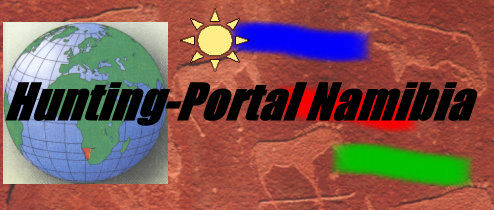Hunting Portal
Namibia



Characteristics:
Tall bulls can reach a shoulder height of 170 cm, a head-torso length of 340 cm and a weight of 1,000 kg. Normal body weight is 700 - 820 kg.
Colouring:
While calves are still densely hairy, the coat becomes sparser with age, and old animals are almost naked. The color of the ceiling is most often black; but can also have different shades of brown.
Habitat:
Grass savannahs with bush and tree populations and year-round water supply.
Occurrence (in Namibia):
In the wild only in the far northeast of Namibia (Caprivi) The Mamili area, west of the Kwando River, or the Mahango Game Reserve offer good hunting opportunities. Some licenses are also available for the Ojozondjupa region (Waterberg Plateau Park and Bushmanland).
Main food:
Mainly grass and young shoots of bushes and trees with a year-round supply of water for scooping and wallowing.
Rutting season:
September - December
Gestation period:
After 11.5 months of gestation, a calf is set.